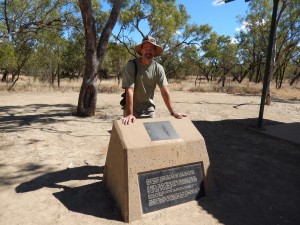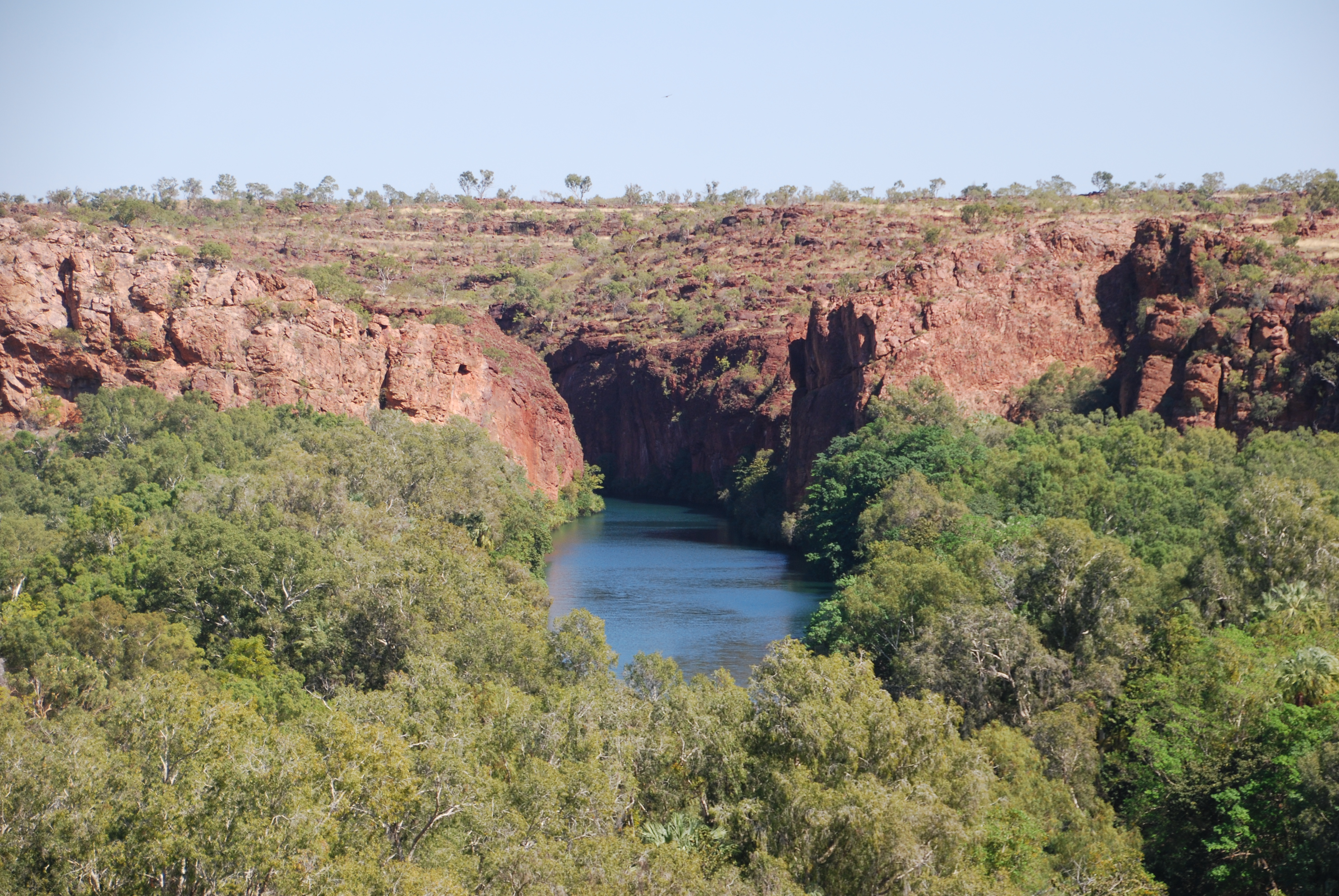Gulf country
The vast spaces around the Gulf of Carpentaria are famous for crocodiles, barramundi and…well…vast spaces. We left Cape York and headed toward the Gulf across long dirt tracks, frequent water crossings, endless Aussie scrub and a relentless dust that found its way into every nook and cranny of our truck, our equipment and ourselves. There’s no escaping the dust, that’s for sure, but it comes as part of an overall package that makes this remote part of Australia a great travelling experience.
We travelled over 300 km on a local track that connected various stations in the southern reaches of the Cape. These roads were forever cursed by either deep sections of bull dust that required four wheel drive and windows up in order to avoid being suffocated by the dust or long stretches of bone jarring washboard sections that would test every rivet in the truck and every joint in our bodies. And the whole trip passed without seeing another vehicle.
We camped on the wide Mitchell River after crossing on a manmade causeway that is only open for a few months a year. Without this crossing people living north of the river would have a two day trip to civilisation. From the river we followed the Burke Development Road, which was seriously in need of more development, until we got to the regional centre of Normanton.
Normanton was the first town, paved road and mobile service we had been in for 8 days and even though it was the big smoke for us it has only 1,500 hearty inhabitants. It has a strong history in mining and exploration but is now better known for a replica of the Big Crocodile (the largest ever killed at 28 feet) and the Purple Pub. Naturally we frequented both places, one for a burger and a beer, the other for photos, before heading out to the Gulf and the fishing mecca of Karumba.
The community of Karumba is only half the size of Normanton but is the go to place for fishermen (and as we found out, fisherwomen). Here the barramundi is king and people drag their boats for thousands of kilometres to park in one of the crowded caravan parks and throw their lines into the nearby rivers and estuaries. For us, probably the only non-fisherpeople within 500 kms, it was time to head to the Sunset Tavern to watch the sun die on the Gulf (a rare experience for east coasters) and enjoy a beautiful barramundi (what else?) from the restaurant. So in that way we were at least supporting the local fishing industry.

At Burke and Wills' Camp 119, their furthest northerly camp. A more desolate spot you could not find.
With a new second spare tyre and all other lost gear replaced we headed westward toward Burketown. First stop was Camp 119 which is Burke and Wills’ most northerly camp in their failed attempt to find the north coast of Australia. Burke and Wills are probably the most famous of Australia’s incredible group of inland explorers and their heroic journey across Australia’s harshest land in the 1860’s which ultimately ended in both their deaths is today part of Australia’s folklore. To stand in such a dusty and forgotten spot at their most northerly camp, and even see faint carvings in the old trees that were left behind, is a true reminder of the challenges and hardships of their memorable journey.
That night we stayed in the small fishing town of Burketown (pop. 235) to watch the deciding State of Origin game with some locals and then headed south along more dusty and corrugated roads to the magnificent Lawn Hill National Park. These roads, like so many, test the uninitiated but we came to respect and appreciate them as all must. In hundreds and hundreds of kilometres over the last few days we came to know very well the only four signs ever shown – DIP, CREST, GRID and FLOODWAY. They came at all and any times, sometimes in pairs and it is for these four signs that we will forever remember the Gulf.
Lawn Hill, now call Boodjamulla as its local Aboriginal name, has two key attractions. The first is Riversleigh, a UNESCO World Heritage location which has amazing animal fossils dating over 25 million years old embedded in ancient limestone. We were able to walk amongst these fossils in 31 degree heat and try to appreciate what life must have been like back then as waters rose and fell, rocks and soils changed, animals evolved and disappeared. Quite something.
Then it was on to the Lawn Hill gorge section where we slowed the pace a bit and camped for three nights. Lawn Hill, the name of the original cattle station on which the land is on, is blessed with an incredibly deep gorge that has been carved through the rusty red rocks over the millennium by the Lawn Hill Creek. The vertical walls of the gorge lead to Emerald green water, beautiful pandanus trees, palms and melaleucas (paperbark gums), some clinging impossibly to the cliff walls.
One day we took the 7 km walk along the gorge walls to various lookouts and then followed the trail along the banks, a beautiful walk that mixed the harshness of the land on top (and the 30+ degree heat) with the cool rainforest sensation of the river banks. We then hired a two man canoe and paddled the same stream up and back to get the perspective from water level. We swam multiple times in the calm deep water, being careful not to disturb any of the resident freshwater crocs, and took a thousand photos. A great day, possibly the highlight so far.
We spent another day on walks exploring other parts of the park, including more rocky edges looking down on the deep lower gorge and the impressive Aboriginal rock art that has been dated as up to 3,000 years old. Each day finished with a swim in the cool clear water with palm trees hanging overhead and a variety of fish swimming below. Fortunately no sign of crocs.
The ancient fossils, rock art and gorgeous gorges of Lawn Hill mark the end of the Gulf Country and from here we travel north and west into the Northern Territory and what is referred to as the Top End. The road is rough and very irregular with many ruts and holes and dips and rocks to keep both hands on the wheel and the driver tuned. We’ve slowed our pace down now, absorbing as much as possible of the local scenery, culture and sights, inching forward to new adventures. But always there will be dust and it will be everywhere.













